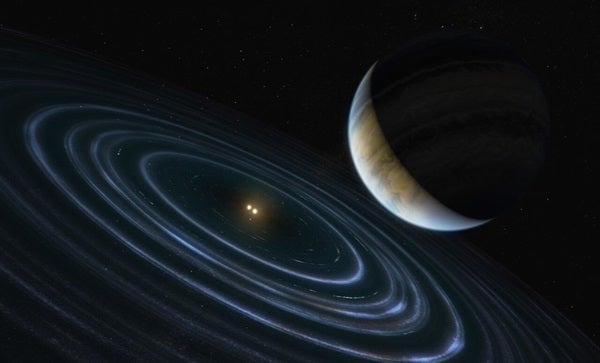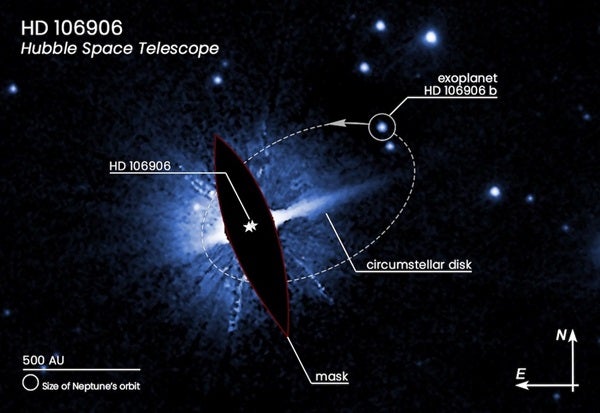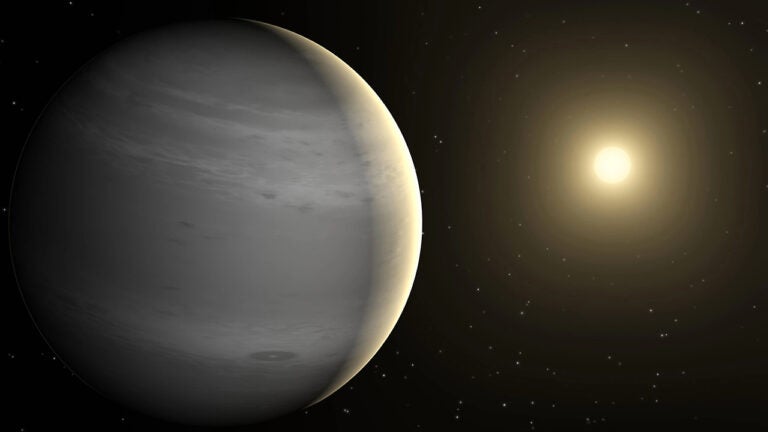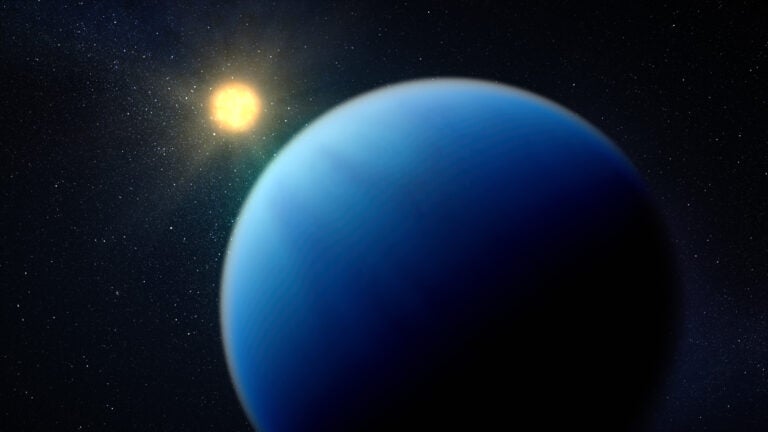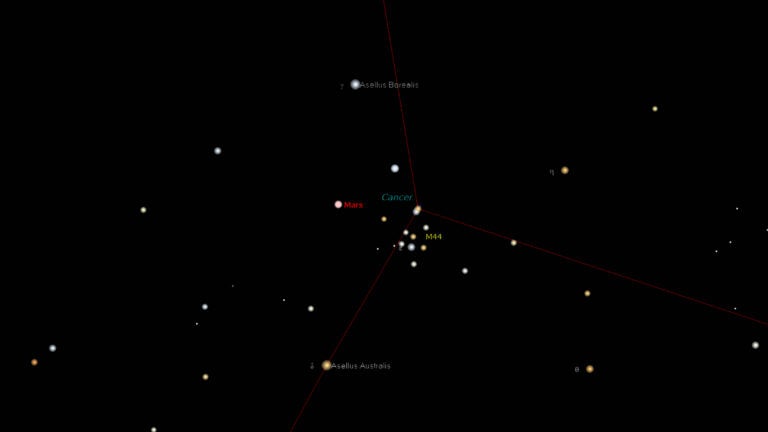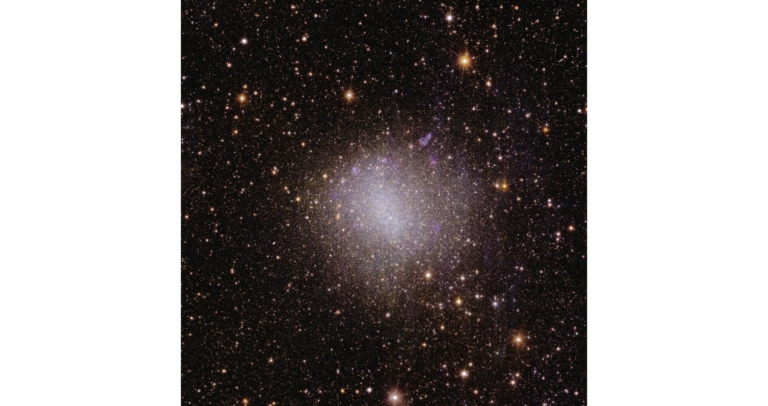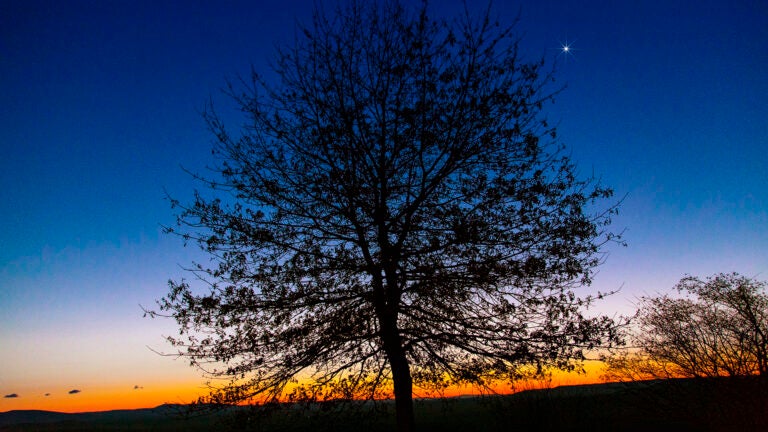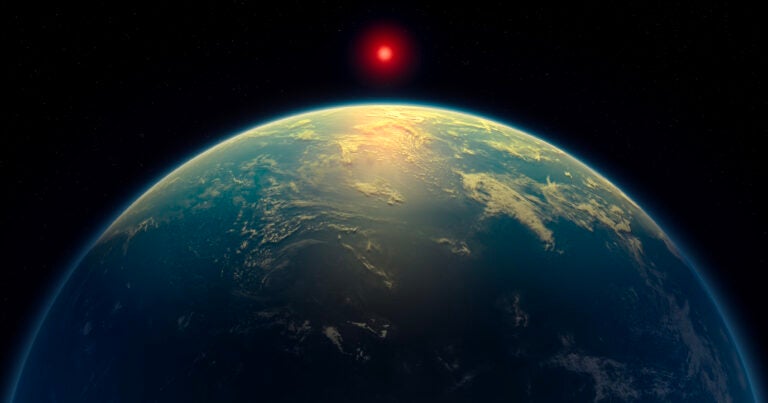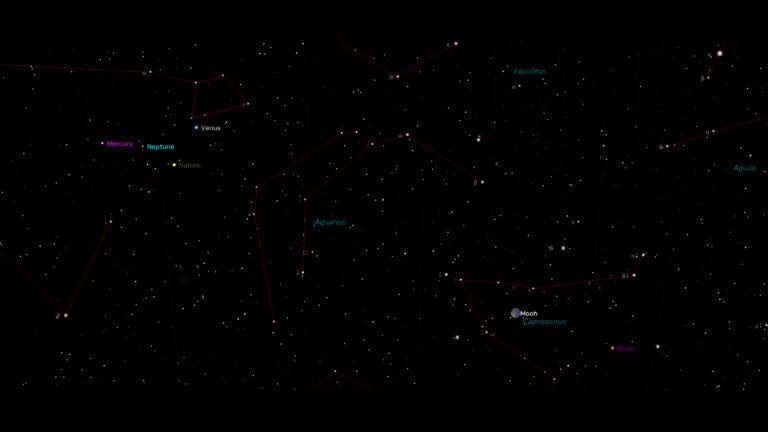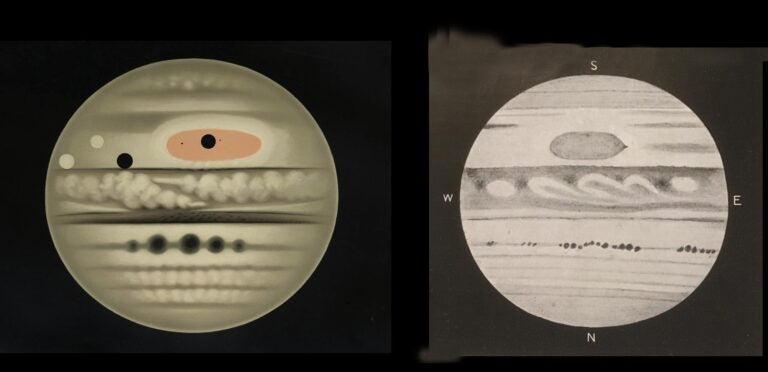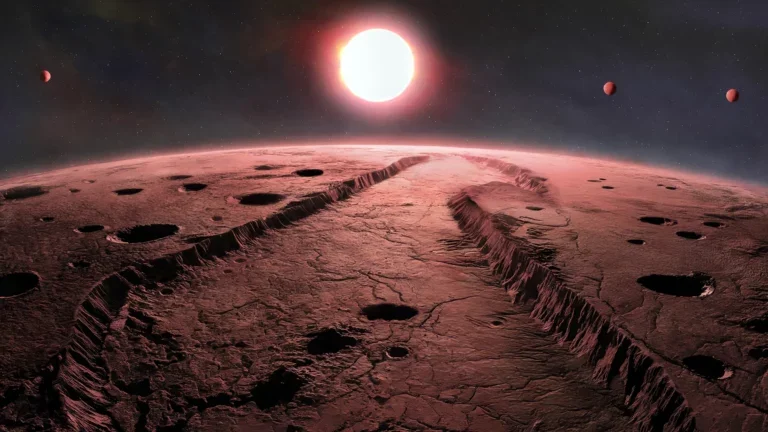This strange exoplanet, HD106906 b, was first discovered in 2013 with the Magellan Telescopes at the Las Campanas Observatory in Chile’s Atacama Desert. But in order to determine its orbit, astronomers needed the Hubble Space Telescope’s clarity and precision to track the planet for 14 years. Eleven times the mass of Jupiter, HD106906 b lies incredibly far from its host stars, taking 15,000 years to complete one orbit at a distance more than 730 times that between Earth and the Sun. Not only is HD106906 b far-flung for an exoplanet, but it also sits 30 degrees off the orbital plane of the dusty disk surrounding its host stars.
One possible orbit is represented by the dashed line in this Hubble Space Telescope image. The bright light from HD 106906 b’s host stars was masked in order for the planet it to be seen at all.
It’s possible that HD106906 b formed much closer to its twin host stars, but as it traveled through the debris disk surrounding the stars, its orbit decayed. The whirling twin stars then kicked the planet further out into the system when it migrated too close. The planet was almost entirely ejected from the system, but astronomers think a passing star might have stabilized the planet’s distant orbit. Candidates for such a passing star have previously been identified using the European Space Agency’s Gaia survey satellite.
Some astronomers suspect a similar scenario may have played out in our own solar system, paving the way for the hypothetical planet dubbed Planet Nine. Proposed in 2015, the gravitational influence of Planet Nine could explain the strange orbits of a unique group of Kuiper Belt objects beyond Neptune.
Planet Nine has yet to be discovered (or even proven to exist), but HD106906 b’s strange orbit provides a compelling parallel to what researchers predict Planet Nine’s orbit would look like. Using the upcoming James Webb Space Telescope, astronomers hope to gather more data on HD106906 b to understand the planet in detail and hope to find other planets in similar orbits around other stars.

